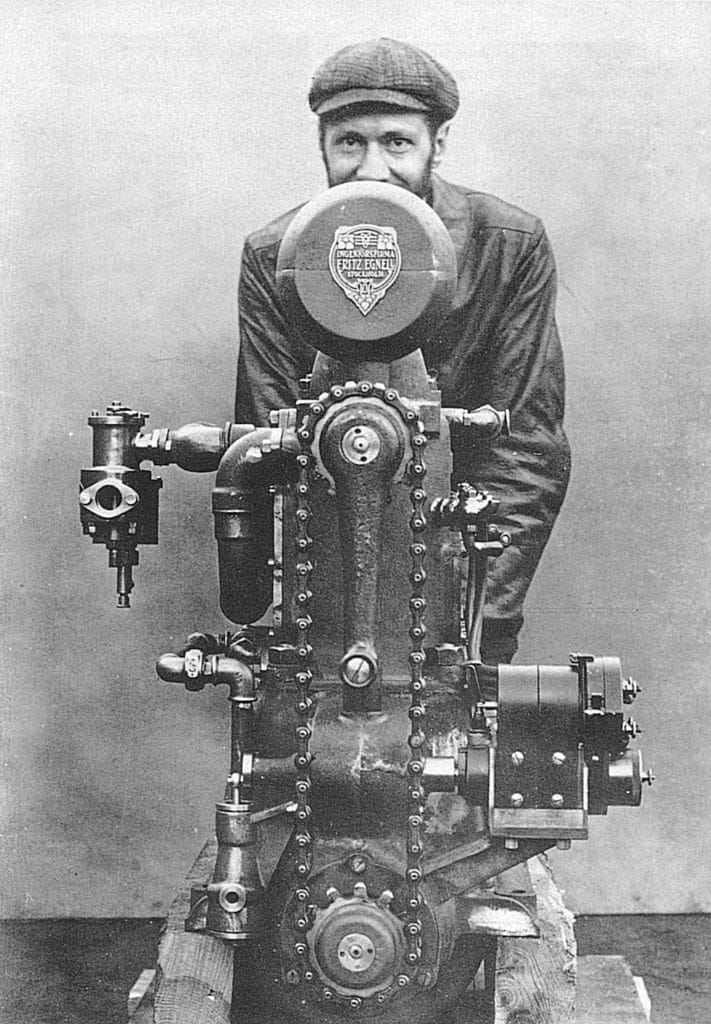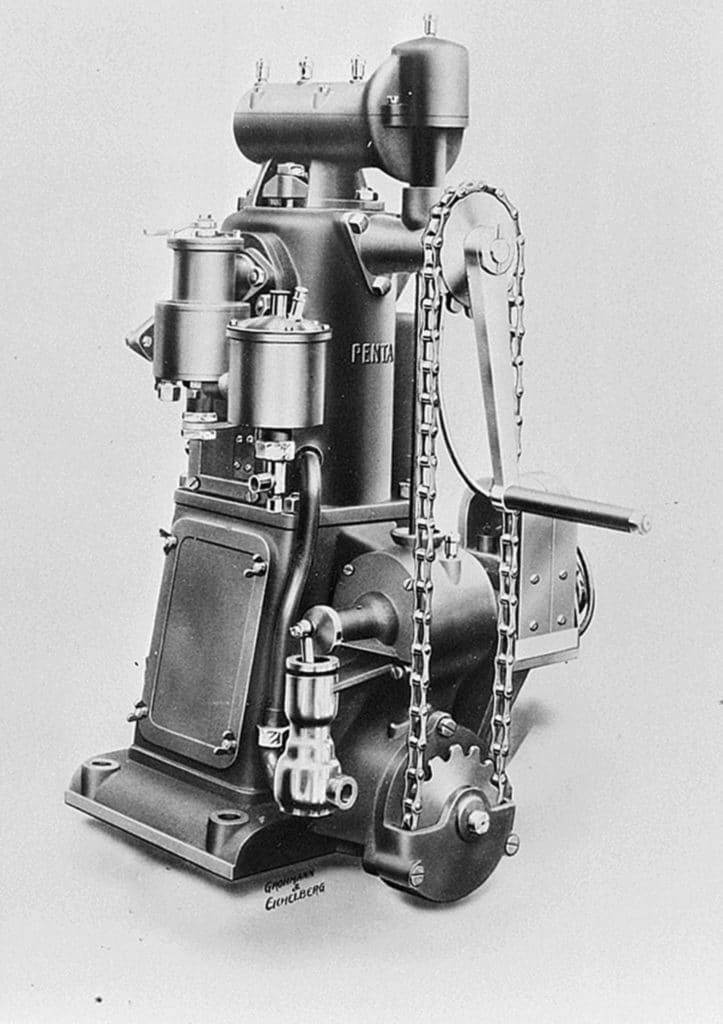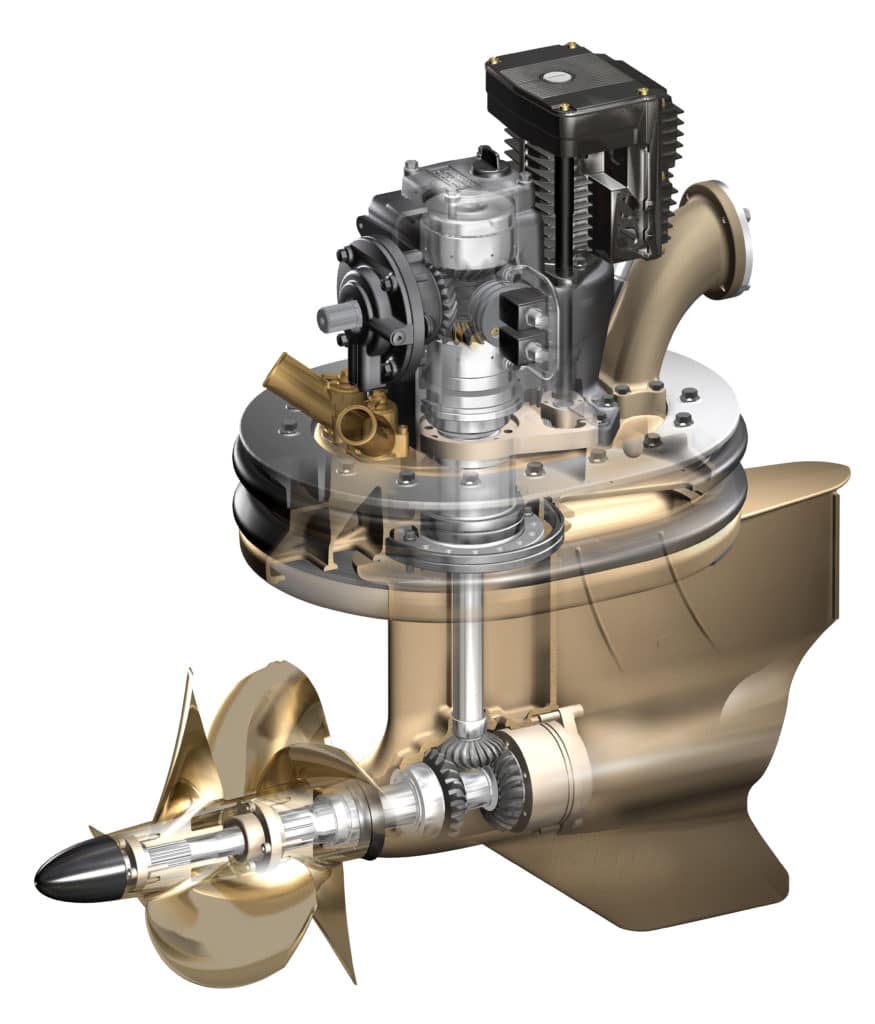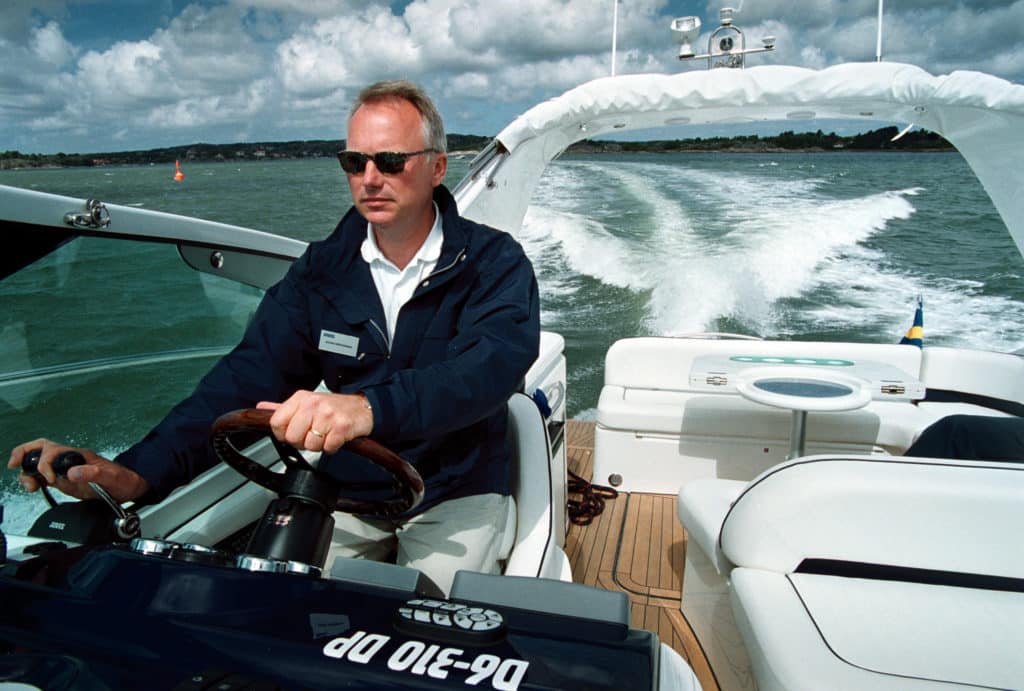
Volvo Penta
What’s in a name? If you’re the 107-year-old Swedish brand Volvo Penta, it’s everything. This well-regarded engine manufacturer built its first motor back in 1907 (coincidentally, the same year this magazine launched) when it was called Sköfde Gjuterioch Mekaniska Verkstad. The engine was called the Penta B1, and the name Penta came from the fact that five people were present during the engine’s initial design meetings. Within two years, the company produced its first 20 motors and has been on the leading edge of propulsion technology ever since.

Volvo Penta built its first outboard engine in 1922, selling almost 8,000 units in the initial year of production. Throughout the ensuing decades, the company looked toward inboard gas and diesel propulsion, and by 1954 the manufacturer had built its first turbo diesel.
Building a better mousetrap has always been this company’s forte, and that was particularly noticeable in 1959, when it matched the benefits of outboard propulsion (such as directional thrust) with those of inboard propulsion (an engine protected inside the boat) and created the Aquamatic sterndrive. In 1965 alone, Volvo Penta sold more than 5,000 of its Aquamatic packages to boaters in the United States. To this day, the sterndrive remains a popular engine option on a plethora of sport boats and cruisers.

All of these milestones led to what many of today’s enthusiasts consider one of the most pivotal innovations in pleasure-boat propulsion history: the Volvo Penta Inboard Performance System, now known as IPS and seen regularly around the docks on pod-drive boats.
When it was introduced in 2005, IPS had people scratching their heads and trying to understand it. There was the setup’s wild, forward-facing, rotating Duoprop configuration; the design required two giant holes in a yacht’s hull bottom where the system’s pod drives sat secured by massive O-rings; and the engines were either close-coupled to the pods or attached via jack shaft. And then there was an option to drive the boat via fly-by-wire joystick. It looked space-age. But while it appeared futuristic, IPS actually did everything Volvo Penta promised it would.

The genius of directing exhaust out and underwater through the drive made for an odor-free ride. The lack of long shafts and hull-mounted struts helped reduce boat noise overall. This setup was more fuel efficient than a straight-shaft-and-prop system. The joystick enabled a novice boater to control each pod drive individually and — in minutes — to bring a vessel confidently into a slip no matter the wind or current.
Volvo Penta’s IPS has seen incredible growth, from originally propelling midsize cruisers to now moving yachts up to 100 feet length overall. Today, there are about 8,400 IPS-equipped yachts on the water. The popularity of pods has truly helped put more people on the water. The only thing left to ask is, What’s next?










